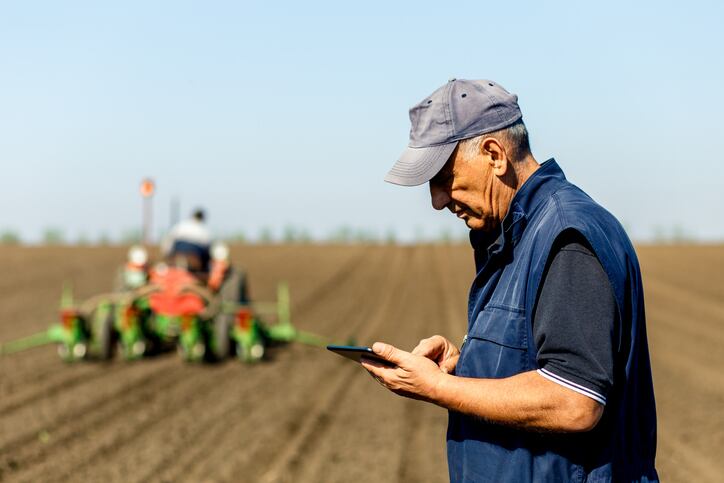Rather, they argued at the virtual conference, the key to ensuring sufficient affordable nutrition in the future while also benefiting business is to embrace biodiversity, explore ways to personalize and make nutrients more bioavailable, and decentralize the food system.
“In 50 years, some things are going to be different and some things are going to be similar. What we think is going to be different is the climate, which means that we’re going to have much more erratic weather patterns – drought, heat, floods, freezes – all much more unpredictable. And what we think is going to be the same, for better or worse, is that we’re going to be still living in a consumer consumption driven, capitalist, global economy where affordability and access are going to be key drivers of food still,” said Naveen Sikka, founder and CEO of TerViva, a company focused on creating alternative proteins and sustainable agriculture by leveraging organic pongamia trees.
With that in mind, he said, industry must prioritize biodiversity and investing in crops that can thrive in the changing climate while also providing affordable nutrition and a livelihood to stakeholders across the value chain.
TerViva tries to live this mission by creating non-GMO plant proteins and vegetable oils from organic pongamia trees – a legume tree native to Asia that is affordable, grows in poor-quality soils and can be used in reforestation to create carbon negative beans, Sikka said.
Josh Tetrick, founder and CEO of Eat Just, which created and scaled a plant-based egg alternative, agrees that it is “pretty bizarre” that the food industry currently uses far less than 1% of the more than 390,000 plant species currently available. But, he acknowledged, efficiently identifying the benefits – both nutritional and economical – of potential new crops can be tedious, time-consuming and expensive without simultaneously investing in food-technology.
For example, Eat Just “developed a technology to effectively screen through plants for particular functionalities” and applications, such as a plant that can be scrambled like an egg, as well as the technology necessary to efficiently create the end result without compromising nutrition, Tetrick said.
As in the case of Eat Just’s egg alternative, Tetrick emphasized there is no single technology to solve the world’s food supply challenges – making it an area in need of innovation and investment.
Improving bioavailability improves farmers’ value-proposition
At the same time that industry must diversify crop reliance, it also must better understand and make use of crops that are readily available today by maximizing the bioavailability their nutrients, added Nora Khaldi, founder and CEO of Nuritas, which uses AI and machine-learning to better understand the molecular diversity of food and the health benefits of those molecules.
“I remember going into the food industry and I was literally gobsmacked by the lack of knowledge we have of food and the composition of what’s there,” Khaldi told virtual attendees. “I started looking into it in terms of types of molecules in food and realizing that if you take an apple, as an example, there is more molecular data in one apple than all social media put together since the inception of social media.”
She added it is “crazy” that industry doesn’t better understand how that data connects to humans and health, and how to extract it in a commercially and environmentally-friendly way.
In response, she said, Nutrias’ technology can quickly connect the health benefits of food molecules and evaluate how to make them more bioavailable as ingredients, which in turn creates an opportunity for manufacturers to meet growing demand for personalized nutrition.
Singling out the benefits of food molecules and driving demand for them also creates a better value-proposition for farmers and could incentivize them to diversify their crops beyond today’s top-selling commodities, she said.
Decentralization could improve local economies, make personalization accessible
Incentivizing and supporting farmers – and all stakeholders along the value chain – is another key component of creating the “perfect food system” of the future, and that basis for creating a more decentralized food system, the panelists all agreed.
“Right now, the farmer typically makes a share of about 3- 5% of the consumer dollar. If we expect farmers to invest in different kinds of crops or a more mixed basket of crops on every acre to deliver more sustainably to the consumer, we also have to include them in the kinds of manufacturing and value-adding technologies” being discussed, said Sikka.
To do that, he added, technology will need to “scale down” to work for farmers’ in their communities and at a much smaller scale than historically deployed in modern centralized models.
This isn’t as difficult as it may sound, added Tetrick, who noted that the Coca-Cola Co. already does this with 19 concentrated facilities set up in both high- and low-income countries and then through bottling partners across other regions that provide local production and distribution in the market.
As illustrated by Coca-Cola’s partnerships with regional players, Tetrick said decentralizing the food system doesn’t mean building a new supply chain completely from scratch. Rather, by investing intelligently in the local economy, companies can scale faster and their products will be more affordable and accessible.
Decentralization also can help make personalization and customization more affordable, added Sikka.
“Imagine a future world where food is produced much more regionally, much more locally, and it is done in a high-tech way, so it is more adapted to the food needs and taste preferences of that region,” he said, adding this strategy not only could improve the health of consumers but also that of local economies as well as the manufacturer’s bottom line by reducing overhead.

